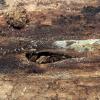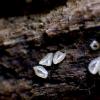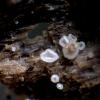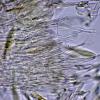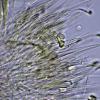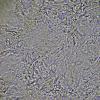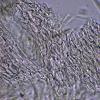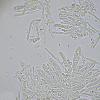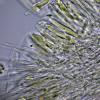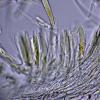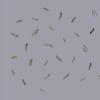
25-11-2016 13:54
 Stephen Martin Mifsud
Stephen Martin Mifsud
Hi, I found numerous seeds of Washingtonia robusta

28-10-2025 22:22
 Bernard Declercq
Bernard Declercq
Hello.I'm searching for the following paper:Punith

28-10-2025 19:33
 Nicolas Suberbielle
Nicolas Suberbielle
Bonjour à tous,Je voudrais votre avis sur cette r

28-10-2025 15:37
Carl FarmerI'd be grateful for any suggestions for this strik

28-10-2025 11:29
 Tanja Böhning
Tanja Böhning
Hello, I found this very small (ca 0,5mm) yellow

27-10-2025 00:34
 Francois Guay
Francois Guay
I found this strange species in Québec,Canada, gr

27-10-2025 15:29
 Michel Hairaud
Michel Hairaud
Bonjour à tous, Avec Elisabeth Stöckli nous avo

26-10-2025 13:39
Joaquin MartinHi,I found this fungus in a mixed forest of spruce
¿Hyaloscypha?
Josep Torres,
17-06-2025 14:23
A probable Hyaloscypha from last June 1st, sprouting on the debarked wood of a sloping trunk on the deciduous forest floor, where the most abundant species in the area were hazel (Corylus) and oak (Quercus).
Whitish apothecia measuring between 0.20 and 0.50 mm in diameter.
Marginal hairs with pointed tips, short septa at their bases, and measuring (55.9) 60.3 - 92.8 (102.3) × (3.3) 3.4 - 5.3 (5.6) µm.
Exciple hyphae arranged more or less parallel, measuring (9.3) 12.5 - 16.7 (18.4) × (4.5) 4.8 - 6.5 (8.9) µm.
Octosporic asci, with a timid reaction of their tiny apical apparatus to the Melzer, and measuring (39.6) 40.3 - 44.8 (46.2) × (5) 5.2 - 5.7 µm.
Free ascospores cylindrical, with a somewhat pointed end and measuring in water:
(6.4) 6.6 - 8.4 (8.8) × (1.5) 1.6 - 2.2 (2.3) µm
Q = (3.2) 3.3 - 4.6 (5) ; N = 24
Me = 7.4 × 1.9 µm; Qe = 3.9
And the mature spores inside the ascus have very similar measurements: (7.2) 7.23 - 8.4 × (1.7) 1.71 - 2.06 (2.1) µm.
Based on their characteristics, my first choice would be Hyaloscypha, and taking into account the substrate, perhaps even Hyaloscypha daedaleae or Hyaloscypha quercina, but it turns out that in both cases they have a spore width greater than my suggestion. I have also been unable to find any other option within the genus with such narrow spores.
Any feedback from you would be welcome.
Thank you very much in advance.
Best regards.
Hans-Otto Baral,
17-06-2025 17:52

Re : ¿Hyaloscypha?
You have no photos fresh in water? I see croziers and would compare H. fuckelii var. fuckelii.
Josep Torres,
18-06-2025 07:49
Hans-Otto Baral,
18-06-2025 08:53

Re : ¿Hyaloscypha?
Water alone is not sufficient. I cannot see any living cells on this photo :-(
Josep Torres,
19-06-2025 07:59
Re : ¿Hyaloscypha?
Hello Zotto.
Unfortunately, there were few live apothecia in the material I collected, and the only images I was able to obtain of an apothecium that appeared to be in better condition were taken with the Melzer.
Now the material has been through the dryer and is exsiccated. I always do this when I have microscopy available, just to avoid bacterial contamination, which could cause problems if I have to resort to molecular analysis.
Still, thank you for bringing me closer to a specific species, although it might be wisest to leave the subject as "cf."
Best regards.
Unfortunately, there were few live apothecia in the material I collected, and the only images I was able to obtain of an apothecium that appeared to be in better condition were taken with the Melzer.
Now the material has been through the dryer and is exsiccated. I always do this when I have microscopy available, just to avoid bacterial contamination, which could cause problems if I have to resort to molecular analysis.
Still, thank you for bringing me closer to a specific species, although it might be wisest to leave the subject as "cf."
Best regards.

